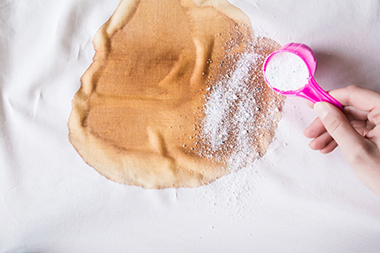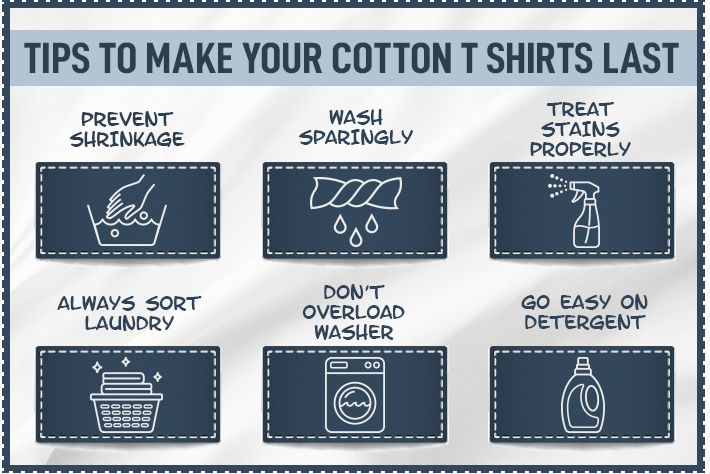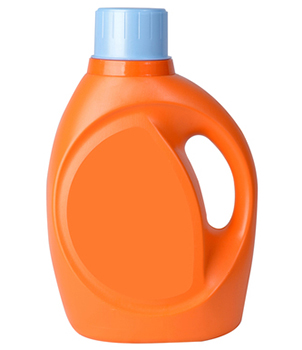From that old t shirt you picked up at the best concert you’ve ever attended to those everyday basics that are staples in your wardrobe, your closet is probably filled with cotton t shirts that you want to last forever. Cotton tees are comfortable and stylish, but just one rip or stain can send them to the trash bin. If you wash and dry one wrong the first time, it could end up shrinking before you even get a chance to wear it. Talk about a waste of money!
Life happens, and it isn’t always possible to protect our clothing from accidental damage or from just wearing out as the result of constant wear. The tips listed below, however, can help you make your cotton t shirts last as long as possible.
PREVENT SHRINKAGE

One of the drawbacks of cotton is that is it prone to shrinking—especially during the first wash/dry cycle. Few things are worse than rendering clothing too small before you even get to wear it. The good news? With a little care, you can prevent it from happening.
During the manufacturing process, tension is applied that stretches the yarn and fabric. When you put it in the washer or dryer, the heat can cause the material to shrink back to its natural size. Even bright sunlight can make cotton shrink.
The solution? Wash your cotton t shirts by hand or use your washing machine’s delicate cycle with cold water. Avoid putting any clothing made from natural fiber in the dryer. Instead, invest in a few folding tables and allow your cotton tees to dry flat. They can also be hung on hangers to dry. If you absolutely must put them in the dryer, use the lowest heat setting possible to prevent shrinking.
GIVE YOUR FAVORITES A REST

 We all have our favorite cotton t shirts that we would wear every day if we could. Doing so, however, could cause them to wear out prematurely. Rotate your shirts so you aren’t wearing the same ones constantly. This gives your favorites a bit of a break and helps ensure that they will last longer.
We all have our favorite cotton t shirts that we would wear every day if we could. Doing so, however, could cause them to wear out prematurely. Rotate your shirts so you aren’t wearing the same ones constantly. This gives your favorites a bit of a break and helps ensure that they will last longer.
When you aren’t wearing a particular shirt, be sure to store it properly. Don’t pack your closet too tightly and take steps to avoid pests, like moths and rodents, which can wreak havoc on your wardrobe. If you are putting away your t shirts for an entire season, neatly pack them in airtight containers. Store the containers in a dry area away from direct sunlight.
WASH SPARINGLY

The laundry cycle takes a serious toll on cotton t shirts. Frequent washing and drying causes fabric to break down quickly. While we don’t recommend never washing your t shirts, you can probably get away with wearing them a couple of times before throwing them in the wash. If you only wore a shirt for a few hours and didn’t sweat or spill anything on it, there is no reason to wash it right away.
If you want to freshen up your favorite shirt in between washings, throw it in the dryer for a few minutes on the “fluff” or “no heat” setting. Toss in a dryer sheet for a burst of fresh fragrance without all the wear and tear of completely laundering a mostly clean shirt.
CARRY A STAIN REMOVAL WIPE OR PEN

 Life is messy. Despite our best efforts, it just isn’t possible to always avoid spills. Whether it’s coffee, wine, spaghetti sauce, ink, or just about any other type of stain, treating it right away is the most important step to not ruin your shirt. Stain removal wipes and pens can be tucked in your purse, glove compartment, or even your wallet, and having one handy could help you prevent permanent damage.
Life is messy. Despite our best efforts, it just isn’t possible to always avoid spills. Whether it’s coffee, wine, spaghetti sauce, ink, or just about any other type of stain, treating it right away is the most important step to not ruin your shirt. Stain removal wipes and pens can be tucked in your purse, glove compartment, or even your wallet, and having one handy could help you prevent permanent damage.
When you have a stain, treat it immediately following the instructions on the product’s packaging. Launder the item as soon as you are able. Portable stain removal tools work great for pre-treating spots and stains, but they are not a substitute for a good washing.
TREAT STAINS PROPERLY

Different types of stains call for different treatment protocols. No matter what type of stain you are dealing with, though, you need to treat it as quickly as possible. The longer you wait, the more likely the stain is to set. Setting occurs when the stain forms a chemical bond with the fabric and becomes nearly impossible to remove.
 Remove as much of the spill as possible and determine the best way to treat the remaining stain. Fresh blood stains, for example, need to be soaked in cold water, and then laundered. Dried blood stains should be soaked in warm water with an enzyme-containing product prior to being washed. Butter should be treated with a pre-wash stain remover, and then washed using the hottest water that is safe for the material. When rinsing stains, rinse from the back to avoid forcing them into the stain. In most cases, you shouldn’t rub, as doing so could force the stain deeper into the fabric.
Remove as much of the spill as possible and determine the best way to treat the remaining stain. Fresh blood stains, for example, need to be soaked in cold water, and then laundered. Dried blood stains should be soaked in warm water with an enzyme-containing product prior to being washed. Butter should be treated with a pre-wash stain remover, and then washed using the hottest water that is safe for the material. When rinsing stains, rinse from the back to avoid forcing them into the stain. In most cases, you shouldn’t rub, as doing so could force the stain deeper into the fabric.
Before you dry any stained items that you have treated and washed, check to see if the stain has been completely removed. If it hasn’t been, the heat from the dryer could set the remaining stain and make it impossible to remove.
Stains are part of life, and there are countless different ways in which they can ruin your favorite cotton t shirts. Knowing how to properly treat them is the best way to win the battle.
ALWAYS SORT YOUR LAUNDRY

Sorting laundry only takes a few minutes, but it’s a step that many of us neglect. Throwing everything together in one load isn’t a big deal, right? Wrong. When you throw your clothes in the washing machine, they constantly move around each other as they are being cleaned. If you are washing your cotton tees and your jeans in the same load, a zipper could end up getting snagged and cause a hole in your favorite shirt.
Be sure to sort your clothing by color, too. If you wear white undershirts, they should only be washed with other whites. Pastels and prints belong with your colored clothes. Even if you are washing items that have been laundered countless times, they can still transfer color onto your whites and make them appear dull and dingy.
Don’t mix cotton clothing with items made from synthetic materials. The natural fibers wash differently from synthetic fibers, so it’s best to keep them separated to prevent damage.

WASH INSIDE OUT

Before you throw a cotton t shirt in the washing machine, turn it inside out. This is especially important if it is screen printed or otherwise decorated. There are a few reasons to do this. First, turning shirts inside out helps prevent images from being damaged during the wash. It also helps keep dark and bright colors from fading.
Turning your shirts inside out might also help get them cleaner. Think about it—the inside of your shirt is the part that is up against your body. It absorbs your sweat throughout the day, so, chances are, it’s dirtier than the outside. By turning them inside out, you can be certain that your washing machine handles the worst of the grime.
DON’T OVERLOAD THE WASHER

When you are trying to save time and use less water, cramming the washer as full as possible may seem like a great idea. It really isn’t, though. In fact, overloading the washer is actually harmful to your clothing and the machine itself. Clothes do not get as clean when the washer is overloaded, and they rub together so much that the fabric can be damaged.

Clothes partially get clean in the washer due to the friction that occurs when the agitator moves them around. When everything is packed in too tightly, though, it can cause too much friction and result in delicate fabrics like cotton breaking down prematurely.
Doing multiple loads will take more time—especially if you’ve fallen behind on laundry—but it will help protect your cotton t shirts from damage, and you won’t have to worry about wasting time rewashing items that were not properly laundered the first time around.
USE A DELICATES BAG FOR YOUR FAVORITES

Delicate laundry bags aren’t just for washing lingerie. They work great for protecting your nicest tees in the wash, too. These mesh bags are available just about everywhere, and they are a simple and affordable way to keep your shirts a bit safer. The bags prevent the clothing contained within from rubbing against other items in the wash or getting snagged. This helps protect the fabric, as well as any designs that may be on the shirt. Plus, washing your t shirts in a “delicates” bags means they will be much easier to sort out so you don’t accidentally put them in the dryer.
BE CAREFUL WITH BLEACH

Bleach may seem like the best solution for washing your white cotton tees, but it should be used with caution. If you are dealing with sweat stains, it may not even work. If you just want to brighten up a load of whites, be sure to properly dilute it. When used in too high a concentration, chlorine bleach can be extremely harmful to cotton.
Never use chlorine bleach when washing non-whites, and be sure not to drip even a drop on your colored tees. Color-safe bleach is a much better and safer solution for keeping whites their whitest and brights their brightest.
When you’re dealing with sweat stains or general yellowing of white t shirts, try a bluing agent instead of bleach. Products like Mrs. Stewart’s Bluing counteract yellowing to make old white shirts look like new again.
GO EASY ON DETERGENT AND FABRIC SOFTENER

 Just about everyone who does laundry is guilty of occasionally using too much detergent or fabric softener in a load. In addition to being wasteful, this can harm your clothing. Many people mistakenly believe that more detergent equals greater cleaning power, but, in reality, it has the opposite effect. The extra detergent settles on clothing and makes it stiff, dull, and uncomfortable. Too much fabric softener can have the same effect.
Just about everyone who does laundry is guilty of occasionally using too much detergent or fabric softener in a load. In addition to being wasteful, this can harm your clothing. Many people mistakenly believe that more detergent equals greater cleaning power, but, in reality, it has the opposite effect. The extra detergent settles on clothing and makes it stiff, dull, and uncomfortable. Too much fabric softener can have the same effect.
Try using half as much detergent as usual and adding ½ cup of baking soda. The baking soda acts as a detergent booster and deodorizer that allows you to get your clothes cleaner without using more detergent. Baking soda won’t harm your cotton tees. You may be surprised to see just how clean and comfortable they come out when using this simple trick.
CLOSING THOUGHTS

Properly taking care of your cotton t shirts takes a bit more effort than just throwing them in the washer and dryer and forgetting about them, but doing so can help you keep your favorites out of the trash can a lot longer. Properly treating stains and taking care to wash cotton clothing the right way helps keep spots and discoloration from becoming permanent, and it can help you avoid losing a cotton tee to shrinkage.






